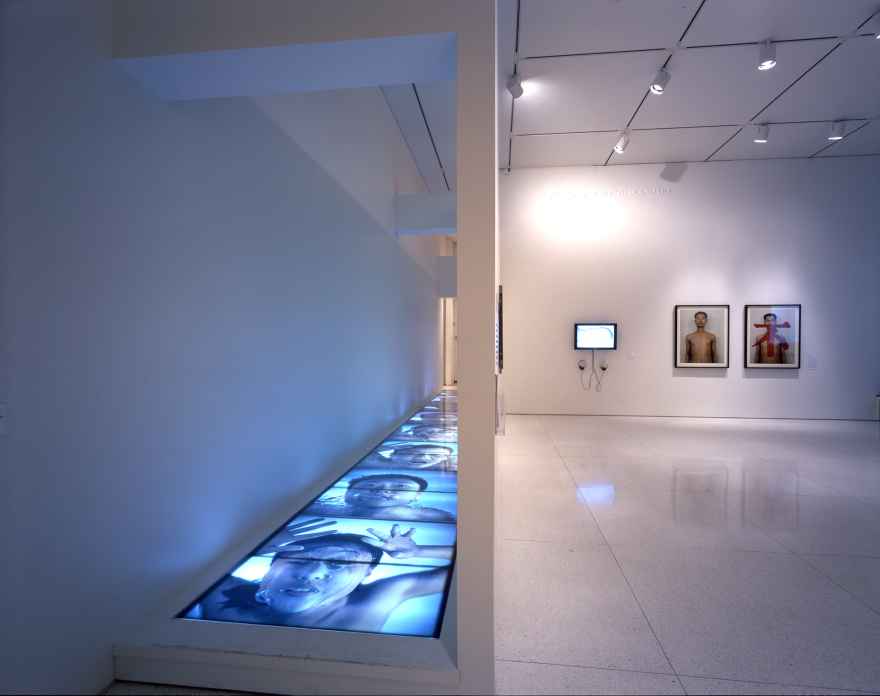Aught Culture: The Exhibitions That Defined the 2000s

The following was published in Art in America on December 8, 2020.
By Richard Vine
Twenty years ago, anyone attending or reading about shows of Chinese contemporary art in the West could be forgiven for thinking that the radical new art in China—which equally eschewed traditional landscape painting, the Socialist Realism long sanctioned by Mao Zedong, and the prettified French Academy–style “naturalism” first learned before China’s Cultural Revolution—was primarily of three types. There was the caricature-like figurative painting practiced by artists like Fang Lijun, Yue Minjun, Zeng Fanzhi, Zhang Xiaogong, and Wang Guangyi, often centering on big faces and promoted under catchy rubrics like Cynical Realism and Political Pop. There were massive installations by artists such as Cai Guo-Qiang (stuffed animals and gunpowder explosions), Gu Wenda (human hair), and Xu Bing (fake-language panels and scrolls). And there were nearly maniacal performances, like those of Zhang Huan, hanging in chains from the ceiling of his studio and being bled by doctors; He Yunchang entombing himself in a concrete monolith for twenty-four hours; and Yang Zhichao having his shoulder seared with a hot branding iron—that sort of thing.
Then, in 2004, came the illuminating exhibition “Between Past and Future: New Photography and Video from China.” Co-organized by University of Chicago professor Wu Hung and International Center of Photography curator Christopher Phillips (a former senior editor at A.i.A.), the survey comprised 130 works by sixty Chinese artists. It debuted at the International Center of Photography and the Asia Society, both in New York, and toured to six other museums in the United States and abroad, including the Smart Museum of Art at the University of Chicago. The vision it delivered was that of a nation utterly transformed both physically and socially. Photographs by Zhang Dali and Sze Tsung Leong showed historic neighborhoods reduced to rubble to make way for soaring modern towers; Rong Rong and Xing Danwen documented the renegade life of their artist friends in the squalor of Beijing’s self-styled East Village; Liu Zheng turned his lens on everyone from professional village mourners to convicts to decadent businessmen; Wang Qingsong staged elaborate scenes melding Chinese history and folklore with contemporary life.
Videos in the show ranged from raw exposés to consumerist satires to avant-garde mind games. In Xu Zhen’s Rainbow (1998), a male torso progressively reddens from a long series of unseen slaps. Cui Xiuwen’s Ladies’ Room (2000) secretly records chic “hostesses” primping and gossiping in the bathroom of a high-end Beijing club. Rabid Dogs (2002), by Cao Fei, features Burberry-clad young people, made up to resemble canines, roughhousing on hands and knees in an office strewn with food bowls and luxury-brand handbags. Yang Fudong’s Liu Lan (2003) moodily contemplates the impossibility of lasting romance between an urban, white-suited male fashion plate and an equally attractive but traditionally clad woman from the countryside.
In their interview in these pages [A.i.A., June/July 2004], Wu and Phillips noted that they accomplished their curatorial mission by completely ignoring officialdom in the People’s Republic of China. Their show—and the freewheeling method behind it—was a timely triumph of artistic globalism, concurrent with a briefly roaring market for Chinese contemporary art abroad, before the Great Recession of 2008 and the nearly worldwide retreat into so-called populist (actually nativist) enclaves. “Between Past and Future” accurately reflected both the burgeoning world-awareness in China and the increasingly conceptual nature of photography and video there in the early 2000s. The survey traced those developments from their 1970s photojournalist origins to the threshold of the computer- and internet-based art that today most forcefully counters the Great Firewall and the increasingly conservative (which in China means Party-centric) and nationalistic (verging on xenophobic) cultural policies of the current government in Beijing.
